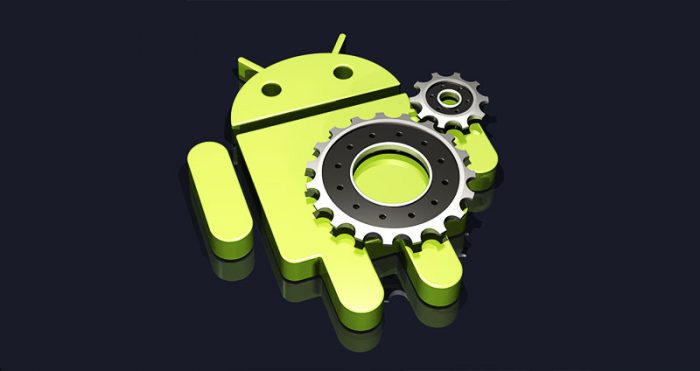The Ultimate Guide to Reinstalling Android Software
Do you own an Android device that's been acting up lately? Have you tried every possible fix but to no avail? Don't worry; you're not alone! Many Android users face software-related issues that require drastic measures, such as reinstalling the software. In this article, we'll provide you with a comprehensive guide to reinstalling Android software and help you get your device back to its optimal performance.
Why Reinstalling Android Software is Necessary?
Android software is the heart of your device. It's responsible for all the operations, from running apps to connecting to the internet, and much more. However, over time, the software can become corrupted or infected with malware, leading to various issues such as freezing, crashing, and even data loss. In such cases, reinstalling the software can be a lifesaver.
Reinstalling Android software can fix many issues, including:
Slow Performance: If your device is running slow, reinstalling the software can help speed it up.
Unresponsive Apps: If your apps keep crashing or become unresponsive, a software reinstall can help fix the problem.
Random Reboots: If your device keeps rebooting without any reason, reinstalling the software can help stop the issue.
Bootloop: If your device is stuck in a bootloop, reinstalling the software can help fix the problem.
Security Issues: If your device is infected with malware or has been hacked, reinstalling the software can help fix the problem and keep your data safe.
How to Reinstall Android Software?
There are two ways to reinstall Android software on your device. The first is to use the device's built-in recovery mode, and the second is to use a computer with the Android Debug Bridge (ADB) tool. In this guide, we'll cover both methods.
Method 1: Using the Device's Built-in Recovery Mode
Most Android devices come with a built-in recovery mode that allows you to perform various maintenance tasks, including reinstalling the software. To access the recovery mode, follow these steps:
Step 1: Turn off your device.
Step 2: Press and hold the Volume Up and Power buttons simultaneously until the device's logo appears.
Step 3: Release the Power button but continue holding the Volume Up button until the recovery mode menu appears.
Step 4: Use the volume buttons to navigate to the "Wipe data/factory reset" option and select it using the Power button.
Step 5: Confirm the action and wait for the process to complete.
Step 6: Once done, use the volume buttons to navigate to the "Reboot system now" option and select it using the Power button.
Step 7: Wait for the device to reboot and complete the initial setup process.
Method 2: Using a Computer with the Android Debug Bridge (ADB) Tool
The second method involves using a computer with the ADB tool to reinstall the Android software on your device. Here's how to do it:
Step 1: Install the ADB tool on your computer.
Step 2: Turn off your device and connect it to your computer using a USB cable.
Step 3: Boot your device into the bootloader mode by pressing and holding the Volume Down and Power buttons simultaneously until the device's logo appears.
Step 4: Open the ADB tool on your computer and enter the following command: "adb devices." This will check if your device is connected and recognized by the ADB tool.
Step 5: If your device is recognized, enter the following command: "adb reboot bootloader." This will reboot your device into the bootloader mode.
Step 6: Next, enter the following command: "fastboot devices." This will check if your device is recognized by the fastboot tool.
Step 7: If your device is recognized, enter the following command: "fastboot erase userdata." This will erase all data on your device.
Step 8: Once the erasing process is complete, enter the following command: "fastboot flash system [system image file name].img." Replace [system image file name] with the name of the system image file you downloaded.
Step 9: Wait for the flashing process to complete, and then enter the following command: "fastboot reboot."
Step 10: Wait for your device to reboot and complete the initial setup process.
Tips for Reinstalling Android Software
Backup Your Data: Before reinstalling the software, make sure to backup your data. This includes contacts, photos, videos, and any important files you have on your device.
Use Official Software: When reinstalling the software, always use official software provided by your device's manufacturer. Using unofficial software can cause more problems than it solves.
Charge Your Device: Make sure your device has at least 50% battery life before reinstalling the software. If your device dies during the process, it could cause permanent damage.
Be Patient: Reinstalling the software can take some time, so be patient and let the process complete without interruption.
Conclusion
Reinstalling Android software is a useful solution to fix various software-related issues. Whether you use the device's built-in recovery mode or a computer with the ADB tool, following the steps provided in this guide will help you reinstall the software on your device successfully. Remember to backup your data, use official software, charge your device, and be patient throughout the process. With a fresh installation of Android, your device will be running like new in no time!
Labels: Interesting, Technology


0 Comments:
Post a Comment
Subscribe to Post Comments [Atom]
<< Home